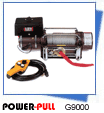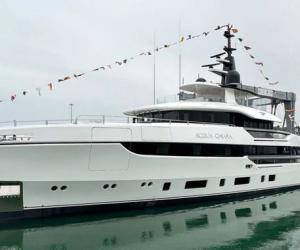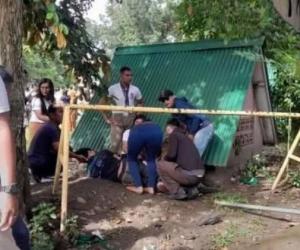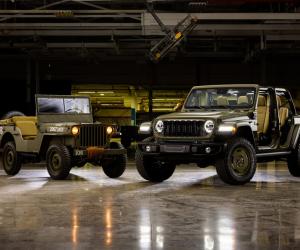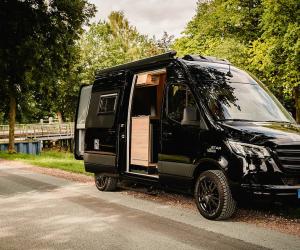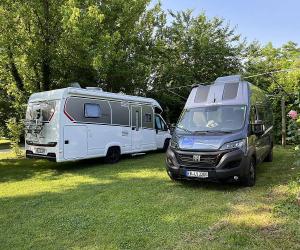Shadow RST-V Reconnaissance Surveillance Targeting Vehicle, USA

Key Data
Crew
up to 6
Length
5.45m
Width
2.057m
Width, reduced for air transportation
1.674m
Maximum height
1.674m
Minimum height
1.397m
Ground clearance
0.457m
Full specifications
The US Marine Corps and US Army Special Operations Command are closely monitoring a new deep strike, deep reconnaissance vehicle program called Shadow. The Shadow is a Reconnaissance, Surveillance, Targeting Vehicle (RST-V), developed by General Dynamics Land Systems. The Shadow RST-V was developed for the Marine Corps Warfighting Laboratory, sponsored by the Defense Advanced Research Agency (DARPA) and the Office of Naval Research (ONR).
The Shadow RST-V is a 4x4 hybrid electric drive vehicle with reconnaissance, surveillance, targeting and C3I (command, control, communications and intelligence) capability coupled with integrated stealth and survivability features. The vehicle can be equipped in a range of mission variants including: forward observer, forward air control, reconnaissance, light strike, battlefield ambulance, air defense, logistics, personnel carrier, anti-armor and mortar weapons carrier. For a Command Post variant, the roof of the Shadow is extended.
The Shadow RST-V has significantly improved fuel economy and survivability and can be transported in roll on/roll off mode in a CH-53 or CH-46 helicopter, V-22 tiltrotor and C-130 transporter. Up to 21 vehicles can be carried in a C-5 Galaxy aircraft or 12 in the C-17 Globemaster.
THE SHADOW RST-V PROGRAM
In 1997, ONR and DARPA awarded contracts General Dynamics Land Systems (GDLS) and Lockheed Martin Missiles and Fire Control to develop a new reconnaissance vehicle that could be developed in a number of mission variants. The vehicles currently used by the US Marine Corps are the M151 A2 fast attack vehicle and the AM General High Mobility Multi-purpose Wheeled Vehicle (HMMWV).
In 1999, GDLS was awarded a contract for the second phase of the Shadow RST-V program, covering the build of four demonstrator vehicles and an option for 39 additional vehicles. Main subcontractors include: Magnet Motors based in Germany, responsible for the electric drives and controls, General Dynamics - Canada (formerly Computing Devices Canada), responsible for integration of the reconnaissance, surveillance and targeting systems and Signature Research, which is carrying out the survivability subsystems integration.
The four RST-V vehicles were delivered in 2002 and were integrated with mission-specific equipment. This was followed by Limited User Evaluation at Yuma Proving Ground in Arizona in 2004.
In May 2005, GDLS was awarded a contract for the upgrade of the RST-V. The upgrade supports continued operational evaluation of the vehicle as a utility carrier, prime mover and electrical generator for various US Marine Corps applications. The upgrade will include a 30kW export power capability generated by the vehicle's hybrid electric drive, which could power battlefield loads such as the Unit Operations Center and radars. The vehicle will be evaluated in an operational environment in early 2006.
SHADOW RST-V VEHICLE INFORMATION
The Shadow RST-V has a crew of four. The crew seats, supplied by Oregon Aero, are located next to the centerline of the vehicle. Bulletproof windows can be installed on the front and sides. There are two doors on the sides of the Shadow and a ramp at the back provides entry to the internal cargo area.
The vehicle has an aluminum body. The optional armor package provides protection against small arms fire and mines.
WEAPONS SYSTEMS
A 7.62mm, 12.7mm machine gun, 40mm grenade launcher, Objective Crew Served Weapon (OCSW), Javelin or TOW anti-tank missile systems can be mounted on the roof hatch.
The Shadow can be fitted with a defensive aids suite including radar and laser warning receivers, and missile warners.
SURVEILLANCE SYSTEMS
A 3m extending mast equipped with a suite of electro-optical sensors is fitted to the Shadow. The surveillance suite was developed by General Dynamics - Canada and includes a dual field of view day and thermal imaging sensor, operating at 3 to 5 microns wavelength, as well as a Northrop Grumman Lightweight Laser Designator and Ranger (LLDR). The sensor suite is linked to an inertial navigation and global positioning system with a Smiths Industries north direction finder with azimuthal accuracy of 3.6 mil.
The communications systems include an ITT SINCGARS ASIIIP VHF transponder and satellite communications.
PROPULSION SYSTEM
The Shadow RST-V has a hybrid-electric drive based on a front mounted turbocharged, intercooled common rail direct injection diesel engine, type 2.5 liter DI-4V, supplied by Detroit Diesel and rated at 114kW. The diesel engine powers a 110kW Magnet Motors permanent magnet generator that drives four 50kW Magnet Motors permanent magnetic hub motors, mounted one in each of the Shadow's four wheel hubs. The power generation system also includes twin SAFT Li-Ion battery packs with total rated output of 20kW hours and a peak power output of 80kW.
The vehicle is fitted with a pneumatic suspension, which can reduce the dimensions of the Shadow by allowing the tyres to be pulled in (from 79in footprint to 62in) and the height of the vehicle to be dropped so the base of the vehicle is 0.1m off the ground. This is to enable transport by V-22 tiltrotor. The base of the Shadow is arched to allow it to move over the ramp angle of aircraft, which also contributes to increased obstacle crossing capability.
ELECTRIC DRIVE SYSTEM
The hybrid electric drive system enables the vehicle to operate in stealth, hybrid and engine only modes. In stealth mode the Shadow can be powered by battery only which provides a significant reduction in acoustic and thermal signatures.
During maneuvers requiring rapid acceleration or maximum torque for steep gradients or to recharge the battery pack, the Shadow is operated in hybrid mode using power from the diesel engine and taking energy from or returning it to the batteries as needed. The Shadow is used in engine only mode to drive the vehicle should the battery pack be inoperative or not used.
The elimination of the conventional mechanical drive train allows the vehicle interior to have the same cubic storage as a HMMWV and still fit within the V-22 envelope. Built-in redundancy in the motor design allows the Shadow's commander the option to continue a maneuver or return to a place of safety on a single wheel motor.
The vehicle has demonstrated maximum road speeds of 112km per hour. With 95 litres of fuel, the Shadow has an unrefueled range of 758km at a speed of 50km per hour. Using only battery power the vehicle's range is 32km.

The Shadow Reconnaissance, Surveillance Targeting Vehicle (RST-V).

The Shadow RST-V is being developed for the US Marine Corps.

The RST-V is fitted with a 3m extending mast on which is mounted with a suite of electro-optical surveillance sensors.

The pneumatic suspension can reduce the vehicle's size for air transportation, by allowing the tires to be pulled in and the height of the vehicle to be dropped.

Te RST-V's hybrid electric drive consists of a diesel engine powering permanent magnet generator and motors.

In stealth mode the vehicle can be powered by battery only, reducing acoustic and thermal signatures.

The RST-V prepared for transportation. Unlike the HMMWV, the RST-V can be transported internally in a V-22 Osprey tiltrotor aircraft.

The sensor mast being extended.

Surveillance sensors include CCD TV, mid-wave thermal imager and laser ranger/designator.

The vehicle's maximum road speed is 112km/h and it has an unrefueled range of 758km at 50km/h.

The RST-V can be armed with machine gun, grenade launcher or anti-tank missile system




